2011 Nissan Leaf - Click above for high-res image gallery
We've met the Nissan Leaf before. First at its coming-out party in Japan, followed by an all-too-brief stint behind the wheel of a Versa-based prototype late last year. Now we've had a chance to sample Nissan's first foray into the world of electric vehicles in production form and the automaker picked one of its most important markets – the heart of Silicon Valley – to give us some seat time.
If there's any area ripe for early-EV adoption, it's San Jose, CA. And during a quick test loop through the tight confines of Santana Row and a run through the city's suburban surrounds, it's obvious that the first mass-produced EV is officially ready for prime-time.
Follow the jump to continue.
Photos copyright ©2010 Damon Lavrinc / AOL
If you're anything like the 16,300 people who have reserved a Leaf for lease ahead of its December launch, you've already devoured all the salient details in the run-up to its release. For those of you late to the party, here's the quick and dirty version of what you get for your $32,780 – or just over $25,000 after you factor in applicable federal incentives (in some states, like California, you can lop off another $5,000).
The Leaf is a five-door, five-passenger city car fitted with a 24kW lithium-ion battery pack complete with 48 separate modules housing four cells a piece. We're pointing out the number of cells because if one fails, Nissan can replace the individual modules without having to replace the entire battery pack – further proof that the Japanese automaker is keenly aware of the issues that could plague a mass-market EV.
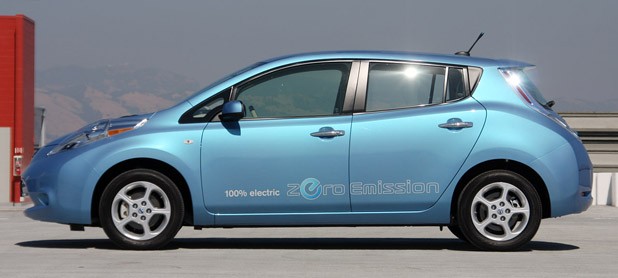
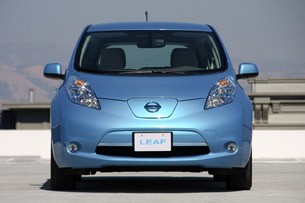
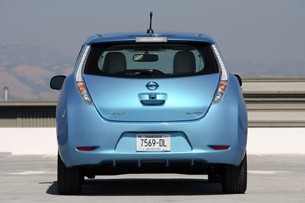
All those crazed electronics get routed to the front wheels through a front-mounted motor producing 107 horsepower and 208 pound-feet of torque. Top speed comes in at just under 90 mph and Nissan claims a 0-60 mph time under ten seconds. Neither figure matters much in this particular slice of the auto world, but both numbers suggest this isn't yet another four-wheeled electric toy.
What arguably matters most is range, and with the Leaf, Nissan contends the slippery hatch (.29 cD) is good for 100 miles per charge – a reasonable amount for its target demographic of urban dwellers and inner-city commuters. When the juice does run out, you can plug one of three different cables into one of two front-mounted ports: 110-, 220- or 440-volt.
The first option is available to anyone who can plug in a toaster, but it provides barely enough juice to top up the batteries after 20 hours of charge time and it doesn't do bagels.
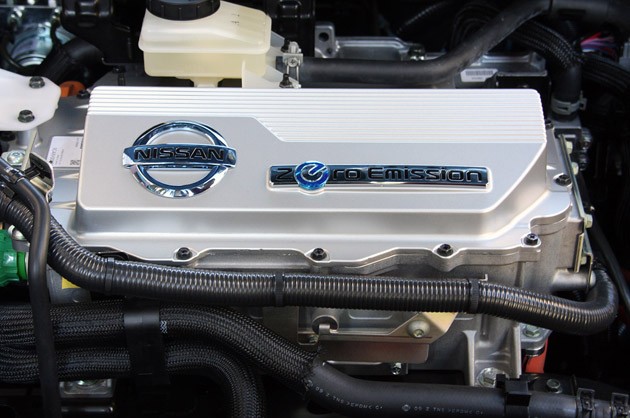
The two other options are far more advantageous. An electrician can adapt your existing 220-volt clothes dryer outlet, thus reducing charge time to around seven hours total. The cost of the in-house charger runs around $2,200, but the Feds will take care of half that amount and Nissan will not only arrange for the installation, it'll allow you to roll the cost of the setup into your monthly payments. If you're lucky enough to live around one of the 440-volt "Quick Charge" stations, you can get up to 80 percent of the battery's capacity in around 30 minutes. Expect to see these popping up all over the U.S. – from California to New York – in the coming months and years... assuming all goes according to plan.
On the subject of cost, the aforementioned $32,780 sticker is the base price (again, not including any government rebates), but if you want the backup camera and spoiler-mounted solar panel, you can option up for the SL model at a $940 premium. The rearview camera is a reasonable accessory, much more so than the solar panel, which simply trickle charges a 12-volt battery to supply electrons to the headlights, clock and a few low-power accessories. Nissan officials admit it's more of a marketing ploy than a functional addition, but that hasn't stopped 85 percent of pre-order customers from optioning up for the SL trim. And for just under a grand to burnish your soon-to-be unassailable green halo, why not?
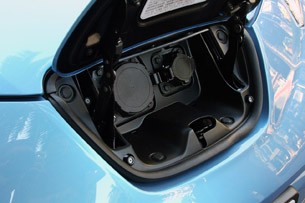
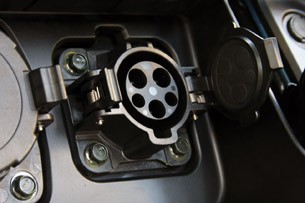
So, with the facts and figures out of the way, what's it like? To begin with, bigger than we expected.
On our initial approach, we thought the Leaf was sitting on a podium. Once we got a clear view, it was obvious that not only is the greenhouse expansive, but it's on the large side of the B-segment. The footprint is like any other subcompact, but the beltline rises high and there's copious quantities of glass expanding from the windshield back.
Although aerodynamic efficiency is a top priority, it's not immediately obvious that the Leaf is anything other than a standard around-town runabout. The only tell-tales are the panel up front that hides the two charging ports and the rather rotund rump that protrudes several inches past the rear wheels in a rather Gallic fashion (fitting, considering Nissan's Renault ties). The taillamps are thin and long, running from below the functional spoiler to halfway down the hatch, and a quartet of diffusers at the rear tip you off to the smooth underbody tray beneath.
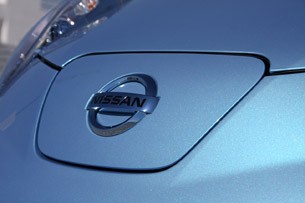
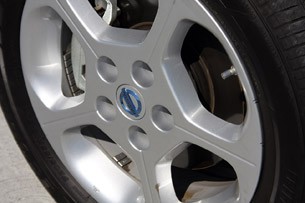
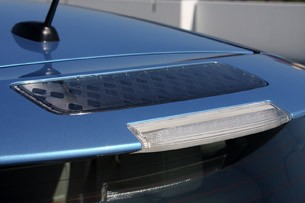
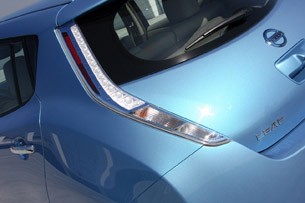
The headlights are more compelling, bulging out from the fenders more than some concepts displayed on the auto show circuit every year. Predictably, they serve a functional purpose. When Nissan was testing the Leaf, they noticed a fair amount of wind noise coming off the side mirrors. And with any EV, exterior noise is amplified due to the lack of racket emanating from under-hood. So the lights were redesigned to split the air leading towards the mirrors, eliminating buffeting and drawing a clear line through the atmosphere.
However, noise had to be added back in. To assuage the fears of the sight-impaired, Nissan fitted a small speaker to the left-front side of the Leaf that emits a subtle tone up to 18 mph. After that, Nissan believes wind and tire noise will be enough to warn pedestrians of an approaching Leaf. And no, customized sounds aren't in the cards, but when you shift the drive selector into Reverse, it does emit a faint, commercial truck-like beep.
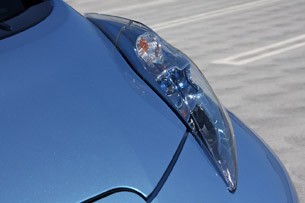
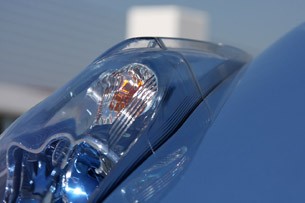
Our first stint inside was in the back seat, and after throwing our camera bag and coat into the commodious trunk (despite the fact that 900 pounds worth of batteries are mounted behind and under the rear seats), we were pleasantly surprised by the amount of space in back. Nissan claims you can fit three people in the rear, but as always, make sure the person in the middle is suitably malnourished and amiable.
Situated behind the driver, the ride was suitably smooth thanks to an independent suspension up front and a torsion beam in th

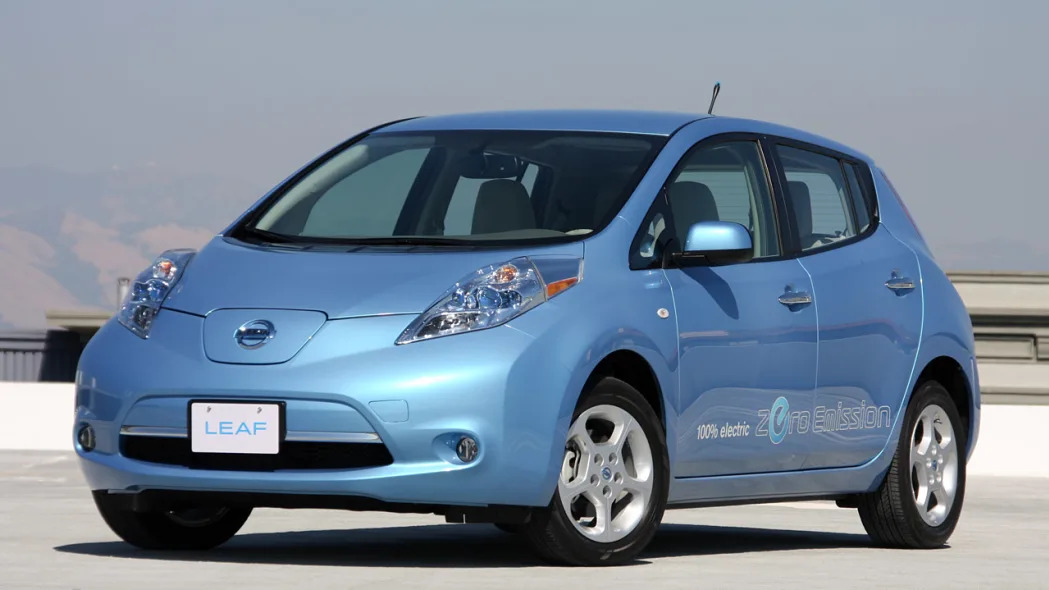

Sign in to post
Please sign in to leave a comment.
Continue